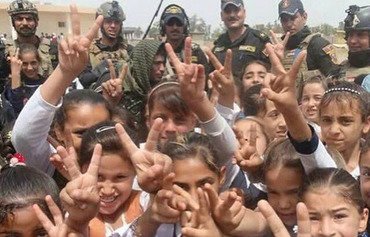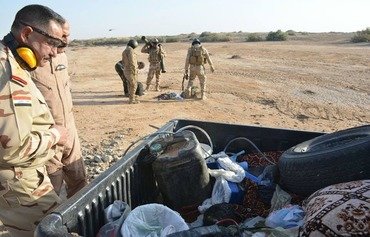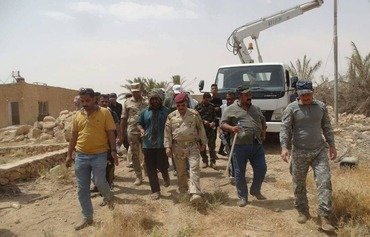The "Islamic State of Iraq and the Levant" (ISIL) lost at least 1,000 of its fighters when Iraqi forces drove out the group from al-Khalidiya Island east of Ramadi over a week ago, Iraqi officials told Diyaruna.
The Joint Operations Command announced the full liberation of al-Khalidiya Island on August 27th , following a nearly month-long Iraqi assault on the ISIL-controlled area.
On July 30th, Iraqi forces launched a three-pronged operation to liberate al-Khalidiya Island with the participation of the Iraqi army, federal police and tribal forces.
Air cover was provided by the Iraqi army, air force and the international coalition.
During the course of the battle, Iraqi forces were able to kill about 1,000 of the group’s fighters, including some foreign fighters, most in the Albu Canaan, Albu Bali and Kartan areas of al-Jazeera, said Tribal Mobilisation head Rasheed Fleih.
There was a large ISIL presence in the area, he told Diyaruna, as most fighters who fled Fallujah upon its liberation came to al-Khalidiya Island via Albu Shajal.
ISIL command centre
Al-Khalidiya Island was ISIL’s command and control centre in Anbar and served as a conduit for the movement of funds and fighters to other areas of the province, said Anbar provincial council member Athal al-Fahdawi.
It was one of the first parts of Anbar ISIL entered, he told Diyaruna, and remained a fortified base for the group because of its complex geographical terrain including numerous orchards, water refineries and irrigation channels that impeded the advance of the security forces.
"The elimination of the terrorist group in al-Khalidiya Island marks the defeat of terrorism in Anbar province as a whole," he said.
ISIL elements had no escape route, he added, as the area had been a safe haven for them during previous Fallujah and Ramadi battles.
"This time, however, it became a graveyard for them, as they had only two options, surrender or be killed," al-Fahdawi said.
Before the battle began, area residents fled to camps for internally displaced persons (IDP) set up by the government in safe areas, he said.
These families will be able to return once security and stability is restored to the region and services to it are resumed, he added.
'Decisive battle'
Extremist elements have plagued al-Khalidiya Island for more than a decade, said al-Khaldiyah district council security committee head Ibrahim al-Fahdawi.
The area was a "stronghold for long stretches of time" of Abu Musab al-Zarqawi, former leader of al-Qaeda in Iraq.
Additionally, he told Diyaruna, the Albu Bali area in al-Khalidiya Island was the stronghold of senior ISIL leader Abu Abdulrahman al-Bilawi, "who led the group’s gangs in the battles of 2014".
The battles to liberate al-Khalidiya Island were the fiercest ever, he said.
"We thought the decisive battle would be in Fallujah, but it turned out that the real battle was the battle to liberate the island, as it was the principal safe haven for all the group’s leaders in Anbar," he said.
The victory in al-Khalidiya will have a positive impact on the battles to liberate other areas, such as al-Ramadi Island and areas in the western parts of the province, al-Fahdawi said.
"The battles there will be easy and the terrorists will be defeated, having lost their main support base," he said.

![A member of the Iraqi forces holds an Iraqi flag in al-Khalidiya, east of Ramadi, on August 1st, during an operation to oust the 'Islamic State of Iraq and the Levant' from the area. [Ahmad al-Rubaye/AFP]](/cnmi_di/images/2016/09/07/6135-iraqi-forces-khalidiya-600_384.jpg)






